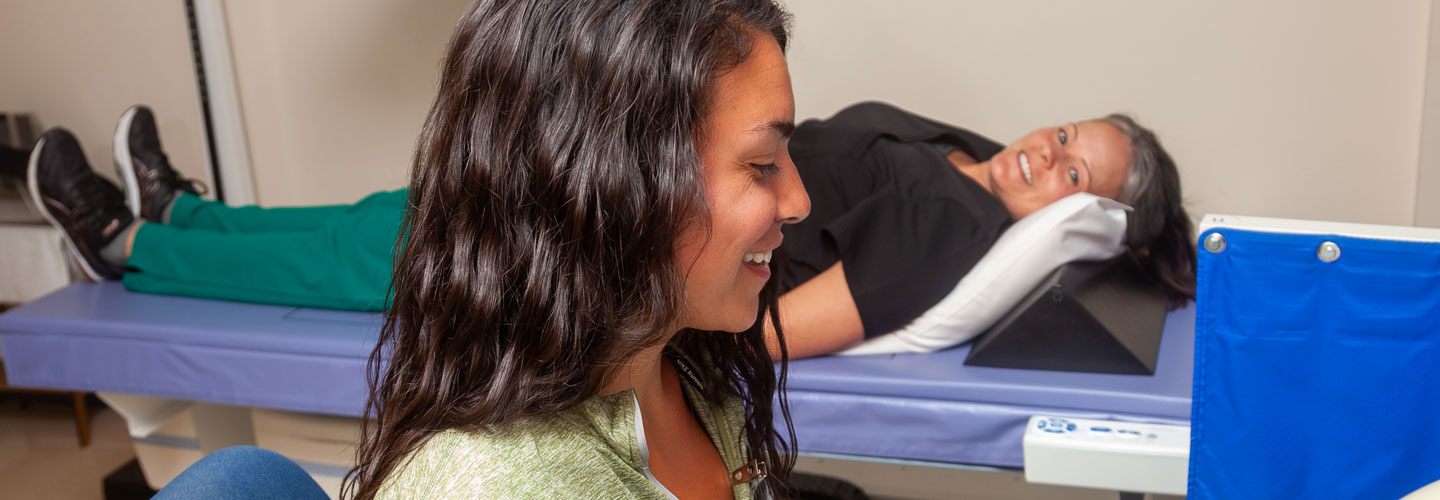One peak is absorbed mainly by soft tissue and the other by bone. The soft tissue amount is subtracted from the total and what remains is a patient's BMD.
A bone densitometry test can also assess your risk for developing fractures. If your bone density is found to be low, you and your physician can work together on a treatment plan to help prevent fractures before they occur. This test can also track the effects of treatment for osteoporosis and other conditions that cause bone loss.
What to expect
Bone densitometry is a simple, non-invasive procedure performed on an outpatient basis. The study is usually completed in 10 to 30 minutes, depending on the body parts examined. Typically, the lower back and hips are measured.
The patient lies on a padded examination table and remain still for a short time while the arm of the machine passes over their body taking measurements. It is important that you stay as still as possible during the procedure to ensure a clear and useful image.
The procedure is painless and radiation exposure is minimal.


